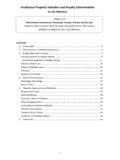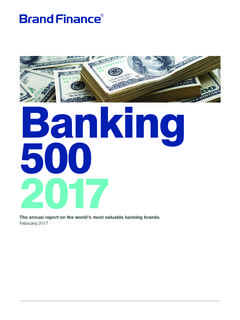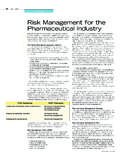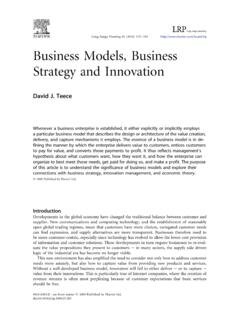Transcription of Intellectual Property Valuation and Royalty Determination
1 Intellectual Property Valuation and Royalty Determination by Tim Heberden 1 Chapter 4 of International Licensing and Technology Transfer: Practice and the Law , edited by Adam Liberman, Peter Chrocziel, and Russell Levine, 2011 update, published by Wolters Kluwer Law & Business. Contents 1. Introduction .. 3 2. The Economics of Intellectual Property .. 5 3. Royalty Rate Determination .. 7 Income Approach to Royalty Setting .. 9 Transactional Approach to Royalty Setting .. 11 Return on R&D Costs .. 15 Return on Market Value.
2 15 25% Rule .. 15 Royalty Cross Checks .. 16 4. Special Circumstances .. 17 Early Stage Technology .. 17 Clinical Trials .. 18 5. Valuation Approaches and Methods .. 18 Purpose and Scope .. 19 Asset Definitions .. 19 Premise or Basis of Valuation .. 19 Valuation Approaches .. 20 Income Based Valuation Methods .. 22 Valuation Assumptions .. 23 Valuation Sense Checks .. 23 Contents of a Valuation Report .. 23 6. Conclusion .. 24 2 Wolters Kluwer Law & Business About the Author Tim Heberden is Managing Director of Brand Finance PLC in Australia.
3 He is a non executive director of the Oceania Valuation Board of the Royal Institution of Chartered Surveyors, and chaired the NSW Business Valuation Group of the Institute of Chartered Accountants in Australia between 2007 and 2010. Tim is also a lecturer at the University of Sydney where he developed and presents a course on Measuring Marketing Performance for the Master of Marketing. Tim specialises in the Valuation and transfer pricing of intangible assets. He has extensive experience of: valuing Intellectual Property and other intangible assets for the purpose of financial reporting, tax compliance, litigation and commercialisation; advising tax authorities and multinationals on the transfer pricing of Intellectual Property ; carrying out IP evaluations for M&A and private equity purposes; and advising blue chip companies on value based brand strategy.
4 Tim is a Chartered Accountant, Chartered Marketer and holds an MBA, Bachelor of Commerce and Bachelor of Accountancy. He is a Fellow of the Royal Institution of Chartered Surveyors, Fellow of the Chartered Institute of Marketing, and a member of LES and the ICAA. Tim has written for finance, risk management, Intellectual Property and marketing publications, and spoken at conferences in Australia, Asia, Europe, North America and the UK. 3 Wolters Kluwer Law & Business 1. Introduction The main objective of this chapter is to describe the factors that guide the Determination of Royalty rates for licensed Intellectual Property rights (IP).
5 Key principles of IP Valuation are also discussed as Royalty rates and value are flip sides of the same coin; both are driven by the earnings capability of the asset. The most obvious need for a Royalty rate is the negotiation of a licence; however, royalties are required for a variety of other purposes, including: Transfer pricing: Within multinational corporations, the use of IP by entities operating in different tax jurisdictions results in a transfer of earnings. Tax authorities in developed markets are paying considerable attention to ensure that arm s length royalties are charged.
6 Guidance is provided in OECD Transfer Pricing Guidelines and country specific tax rulings. Litigation: Damages claims resulting from IP infringements can be influenced by the level of royalties that are likely to have been agreed upon by the owner of the IP and the Strategic planning: The management of IP portfolios benefits from the quantification of the current and potential strength and earnings of each asset. Royalty potential is an important metric in a review of an IP portfolio. Valuation : One of the income based methods of IP Valuation is based on the notional royalties that the Property could generate.
7 In turn, IP Valuation can be required for financial reporting, tax compliance, pre acquisition due diligence, and strategic asset management. At the outset, it is helpful to compare different definitions of intangible items. Accountants use the term intangible assets to describe non monetary assets without physical substance 1 The legal issues associated with the calculation of damages in an infringement suit are beyond the scope of this Chapter, particularly since such issues often are dependent upon the law in the jurisdiction where suit was brought and thus, the jurisdiction calculating damages.
8 For example, in the , a reasonable Royalty for purposes of a damages calculation often is determined in a hypothetical negotiation that evaluates various so-called Georgia-Pacific factors. See Georgia-Pacific Corp. v. United States Plywood Corp., 318 F. Supp. 1116 ( 1970). Moreover, in the , damages in an infringement suit could include the patentee s lost profits and the Courts apply a four-factor test for determining the propriety of lost profits damages, including (1) demand for the patented product, (2) absence of acceptable non-infringing substitutes, (3) manufacturing and marketing capability to exploit the demand, and (4) the amount of profit the patentee would have made.
9 See Ericsson, Inc. v. Harris Corp., 352 1369, 1377-79 (Fed. Cir. 2003); Micro Chem., Inc. v. Lextron, Inc., 318 1119, 1123 (Fed. Cir. 2003). See also Panduit Corp. v. Stahlin Bros. Fibre Works,, Inc., 575 1152 (6th Cir. 1978). 4 Wolters Kluwer Law & Business that are identifiable, controlled by the owner, and expected to generate economic benefits. Intellectual Property rights are a subset of intangible assets. The term Intellectual capital is generally used in a broader context, referring to all non monetary and non physical resources that contribute to value creation.
10 This will include items such as human capital which does not meet the accounting definition of an intangibles asset. Diagram 2. TheTechnogeneratexpecteblocks oKnowlebetweeCompetreconfigcurrent The eco IP is TheThe the The IP iscomtran Mosof th1: Terms Usede Economlogy, tradete cash flowed to generaof enterprisdge of then them, istitive advaguration of and potentonomic chars not diminisre is seldomrisk of wasproperty IPvalue of IP s commonlymbination. Mnsactions cast companieheir IP. d to Define thics of Intemarks and ws.










